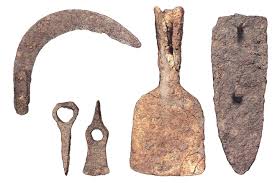Ancient Roman tools have influenced much of our modern day tools and engineering techniques. An amazing example of the same would be how the width of our roads is very similar to what it was in ancient Rome back then. Shipping containers, railway cargo, and even space shuttles have been influenced by it as a result.
Ancient Tools and Technique
However, there are still ancient tools and techniques that were used in Rome that we are still uncovering. Ancient Roman tools were made in a different era. Back then, no standard units of measurement existed and the only power available was animal power like the horse drove carts etc.

In spite of all this, they have always been saluted for their empires military might. Their soldiers were also known to be very loyal. Their weapons played a very important part in leading them to this position of power. They used swords, shields, and spears. The Roman soldiers were also known for smart tactics that unnerved their opponents.
Roman Power tools
Ancient Romans also had many power tools. They actually had powered milling lathes. The lathing rod was usually shaped from stone and turned with gears and ropes powered with kicking a counterweight or watermill from a stream.
Ancient Romans had iron and bronze and could also make small batches of steel even if not of the quantity it is made in today.

Another useful tool was for pulling wire, they actually figured out the art of pulling almost molten metal through stone grates to get a wire of a constant size. This in itself, got them wire which helped in various other tasks.
Ancient Roman Tools and their use
Their tools also had farm implements. They had a “scythe” which was a major consumer item first from bronze, then iron and finally from cast steel. They also produced hammerheads and sharp ends for piths that still exist even today.
Other ancient Roman tools also included navigational devices (early sextants) and sailing counterweights to make it easier to raise or lower sails when doing shipping across the Mediterranean.

Roman engineering was dedicated to reproducible results, and Roman toolmakers guarded their techniques jealously; this is one reason why the fall of Rome and the loss of many of those techniques, are called the Dark Ages.
Fortunately for us, a lot of documentation exists about Roman technologies and their tools. And some of their ideas aren’t that far from what you’d find in a Home Depot or Lowes.



